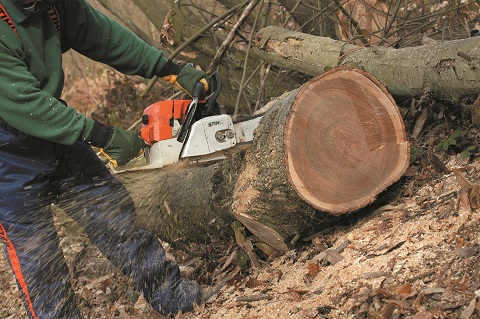Sadly, the forestry industry is facing the news of another chainsaw operator having been fatally injured.
- Currently, there are not many details available about this most recent fatality but the HSE has provided a number of key messages based on initial findings from the investigation:
HSE STATEMENT
Being struck by a tree, or branches, during felling or other tree work is a significant cause of death and major injury in forestry, arboriculture and other land-based industries. Tree work is common across the wider agricultural industry and the risks need to be managed.
- Anyone involved in felling or tree work must be trained and competent for the task being done
- Making a felling cut is a one-person No other people should be close (keep people two tree lengths away). If the tree is on a slope, don’t let people stand lower down the slope where they will be at greater risk of being struck.
- Check trees for signs of decay and other factors that may affect felling
- Keep the escape route, and work area, clear of obstructions
- Communicating safety information to everybody, including visitors, is an important part of managing health and safety
We are constantly reminded that tree felling operations are hazardous and in most cases it is the falling tree and not the chainsaw itself that causes the harm.
If we don’t follow the safety rules then the chance of injury increases. An accident may not happen the first or the second time you ignore the rules but the chances are an accident will happen at some time. This explains why some people ‘have always done it this way’ and not been injured … yet.
The planning stage, before you start felling is crucial, particularly now we are seeing an increase in unstable trees due to the impact of diseases like Chalara and Sudden Oak Death. The presence of these diseases in our woods and forests make the necessity to carry out a risk assessment for the chainsaw felling of trees even more vital.
Before felling a tree, decide on its direction of fall and select a suitable escape route to the rear and diagonal to the line of fall of a tree. The area directly behind the tree is also a danger zone because the tree may bounce or slide back when it hits the ground. The escape route should always be kept clear of obstructions.
All chainsaw cutters should remind themselves of the information in the ‘FISA Guide 302 Basic Chainsaw Felling’. If you don’t have a copy, please visit the FISA website (http://www.ukfisa.com) to read or download or contact your Tilhill Forestry Manager.
FISA has set up a working group specifically to look at chainsaw operations including felling techniques and competence. The working group is working with the HSE to establish safe felling techniques for dangerous trees.
Remember:
- Plan each tree’s felling operation before you start work
- Check the canopy and stem for signs of deadwood and decay and ensure you have the experience and controls to manage the risk
- Select a suitable escape route and keep it clear of obstructions
- Read FISA Guide 302 Basic Chainsaw Felling.



